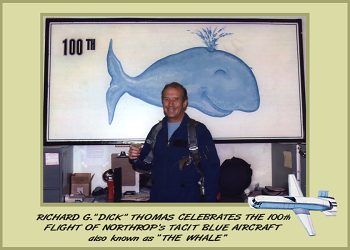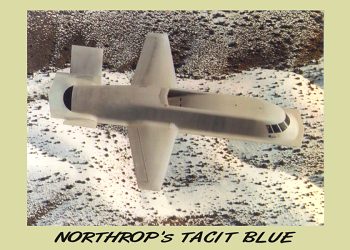
 |
Born April 2, 1930, in Chautuaqua, N.Y., Thomas first flew in an open cockpit Stearman biplane at Parks College, St. Louis University, where he studied engineering. A graduate of the Reserve Officer Training Corps program he was commissioned a second lieutenant in the U.S. Air Foce. He earned his wings in 1952 when he completed primary flight training in the T-6 at Marana Air Base, Ariz. In 1953 he completed basic flight training at James Connally Air Force Base at Waco, TX. After transitioning to jets in the T-33 he flew the F-80C and completed his service in 1956.
He left the regular Air Force for a flight test job with Beech Aircraft in Wichita, KS. He conducted production flight testing of nearly all Beechcraft products including the Model 18, Model 35 Bonanza, Model 50, and King Air. He also joined the Kansas Air National Guard as a member of the 127th Fighter Interceptor Squadron and flew the F-86D and F-100D until 1961.
In 1958, he went to work for Boeing where he tested the ERB-47 and B-52. He conducted flutter tests in the B-52H with Skybolt missiles attached to wing pylons, and helped develop a maximum separation maneuver for the release of nuclear weapons from an altitude of 55,000 feet. In 1962, the company sent him to U.S. Navy Test Pilot School where he graduated as a member of Class 31.
 |
In September 1969, as part of the 6th National Championship Air Races, he participated in the 1,667-mile Harold's Club Transcontinental Dash from Milwaukee, WI, to Reno, Nev., flying a World War II vintage F4U Corsair.
In 1977 and 1978, Thomas spent time in Madrid, Spain, helping the Spanish Air Force flight test the CASA C-101 trainer aircraft. He carried out a complete stability and control and spin-testing program despite the fact that the airplane lacked a spin recovery chute.
As Northrop chief test pilot, Thomas led the flight-testing of TACIT BLUE, a one-of-a-kind demonstrator. He flew the first flight of TACIT BLUE at Groom Lake, Nevada, on 5 February 1982 and piloted 70 of the airplane's 135 flights. According to the U.S. Air Force, TACIT BLUE was one of the most successful high-technology demonstrator programs ever conducted. It had a direct influence on the design of the B-2 stealth bomber including development of the flight control system, low observables shaping and materials, propulsion installation, and electronic systems. Carried out in total secrecy, the TACIT BLUE program was not declassified until 1996 when the airplane was publicly unveiled at the U.S. Air Force Museum (now National Museum of the U.S. Air Force) at Wright-Patterson Air Force Base, Ohio.
Thomas stopped flying in 1986, but continued to work on the B-2 program, developing flying techniques in the simulator before the first flight. He was elected a Fellow of the Society of Experimental Test Pilots and received the Iven C. Kincheloe Award in 1996 (retroactive to 1982) for his work with TACIT BLUE. He retired from Northrop Grumman in 2000. In 2002 he was named a Pioneer of Stealth. Thomas was honored at the Flight Test Historical Foundation's Gathering of Eagles in 2004 and inducted into the Lancaster Aerospace Walk of Honor in 2005. During his career he logged 8,000 hours flying more than 116 different aircraft.
